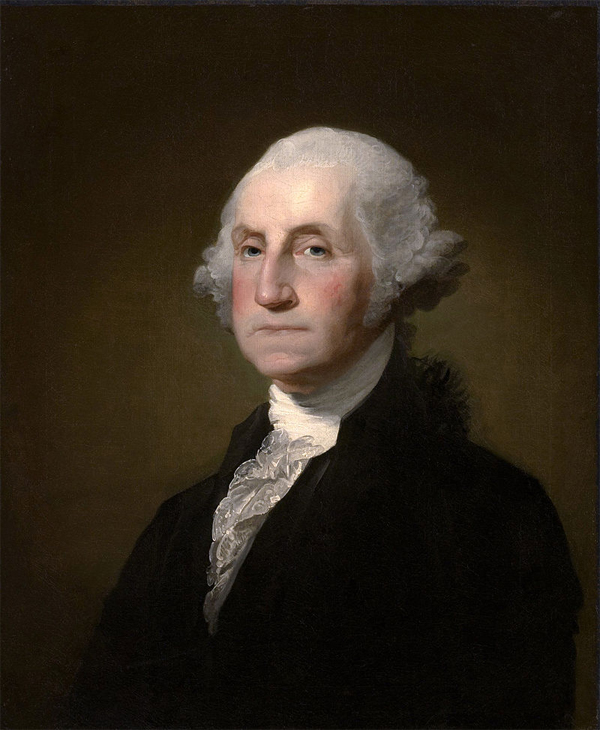
First United States president elected on February 04, 1789
First United States president elected: George Washington, the commander of the Continental Army during the Revolutionary War, is unanimously elected the first president of the United States by all 69 presidential electors who cast their votes. John Adams of Massachusetts, who received 34 votes, was elected vice president. The electors, who represented 10 of the 11 states that had ratified the U.S. Constitution, were chosen by popular vote, legislative appointment, or a combination of both four weeks before the election.
According to Article Two of the U.S. Constitution, the states appointed a number of presidential electors equal to the “number of Senators and Representatives to which the state may be entitled in Congress.” Each elector voted for two people, at least one of whom did not live in their state. The individual receiving the greatest number of votes was elected president, and the next-in-line, vice president. (In 1804, this practice was changed by the 12th Amendment to the Constitution, which ordered separate ballots for the office of president and vice president.)
New York – though it was to be the seat of the new United States government–failed to choose its eight presidential electors in time for the vote on February 4, 1789. Two electors each from Virginia and Maryland were delayed by weather and did not vote. In addition, North Carolina and Rhode Island, which would have had seven and three electors respectively, had not ratified the Constitution and so could not vote.
That the remaining 69 unanimously chose Washington to lead the new U.S. government was a surprise to no one. As commander-in-chief during the Revolutionary War, he had led his inexperienced and poorly equipped army of civilian soldiers to victory over one of the world’s great powers. After the British surrender at Yorktown in 1781, Washington rejected with abhorrence a suggestion by one of his officers that he use his preeminence to assume a military dictatorship. He would not subvert the very principles for which so many Americans had fought and died, he replied, and soon after, he surrendered his military commission to the Continental Congress and retired to his Mount Vernon estate in Virginia.
When the Articles of Convention proved ineffectual, and the fledging republic teetered on the verge of collapse, Washington again answered his country’s call and traveled to Philadelphia in 1787 to preside over the Constitutional Convention. Although he favored the creation of a strong central government, as president of the convention he maintained impartiality in the public debates. Outside the convention hall, however, he made his views known, and his weight of character did much to bring the proceedings to a close. The drafters created the office of president with him in mind, and on September 17, 1787, the document was signed.
The next day, Washington started for home, hoping that, his duty to his country again served, he could live out the rest of his days in privacy. However, a crisis soon arose when the Constitution fell short of its necessary ratification by nine states. Washington threw himself into the ratification debate, and a compromise agreement was made in which the remaining states would ratify the document in exchange for passage of the constitutional amendments that would become the Bill of Rights.
Government by the United States began on March 4, 1789. In April, Congress sent word to George Washington that he had unanimously won the presidency. He borrowed money to pay off his debts in Virginia and traveled to New York. On April 30, he came across the Hudson River in a specially built and decorated barge. The inaugural ceremony was performed on the balcony of Federal Hall on Wall Street, and a large crowd cheered after he took the oath of office. The president then retired indoors to read Congress his inaugural address, a quiet speech in which he spoke of “the experiment entrusted to the hands of the American people”. The evening celebration was opened and closed by 13 skyrockets and 13 cannons.
As president, Washington sought to unite the nation and protect the interests of the new republic at home and abroad. Of his presidency, he said, “I walk on untrodden ground. There is scarcely any part of my conduct which may not hereafter be drawn in precedent.” He successfully implemented executive authority, making good use of brilliant politicians such as Alexander Hamilton and Thomas Jefferson in his Cabinet, and quieted fears of presidential tyranny. In 1792, he was unanimously reelected but four years later refused a third term.
In 1797, he finally began his long-awaited retirement at Mount Vernon. He died on December 14, 1799. His friend Henry Lee provided a famous eulogy for the father of the United States: “First in war, first in peace, and first in the hearts of his countrymen.”
History Channel / Wikipedia / Encyclopedia Britannica / Mount Vernon.org
Library of Congress.gov / Maps of World / Smithsonian Magazine
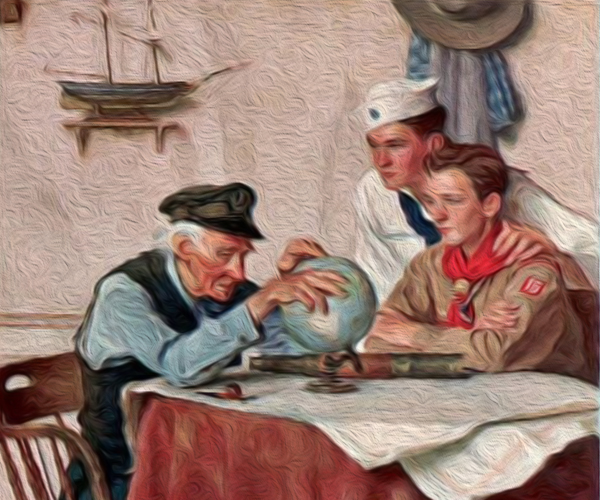
Understanding Military Terminology - Mobile security force
(DOD) A highly mobile and dedicated security force with the capability to defeat Level I and II threats in a joint security area. Also called MSF. Joint Publications 3-10 (Joint Security Operations in Theater - Defense Technical)
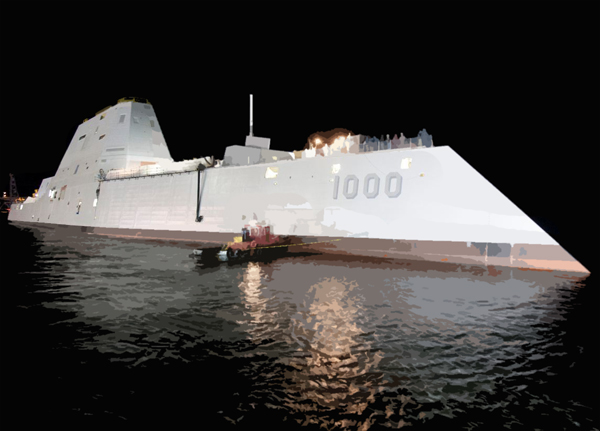
The Old Salt’s Corner
Surface combatants (or surface ships or surface vessels) are a subset of naval warships which are designed for warfare on the surface of the water, with their own weapons. They are generally ships built to fight other ships, submarines or aircraft, and can carry out several other missions including counter-narcotics operations and maritime interdiction. Their primary purpose is to engage space, air, surface, and submerged targets with weapons deployed from the ship itself, rather than by manned carried craft.
The term is primarily used to mean any modern vessel type that is not a submarine; although a “surface ship” may range in size from a small cutter to an aircraft carrier, the weapons and tactics have some commonality, more so than for submerged vessels. They look unusual and different from cruise and other ships.
Surface ships include cruisers, destroyers, frigates, and corvettes, and several outdated types including battleships and battlecruisers. The category does not include aircraft carriers, amphibious assault ships, and mine hunters, as these generally do not use on board weapons system (i.e. aircraft carriers generally only attack with their aircraft, and mine hunters are not primarily combat vessels). However some warships combine aspects of the surface combatant and other roles, such as the Russian Kuznetsov-class aircraft carrier, which carries both aircraft and an array of conventional armament (the class is sometimes termed a “heavy aircraft-carrying cruiser”).
Modern naval warfare is divided into three operational areas: anti-surface warfare (ASUW), anti-air warfare (AAW) and anti-submarine warfare (ASW). The current canonical combined arms naval task force or task group centers around a flagship hosting dedicated command elements to conduct tactical operations within each of these areas. In smaller surface action groups (i.e. a single or a few task elements, such as a lone Aegis-equipped destroyer or cruisers on patrol), the same combatant commander may be responsible for managing all three areas as part of his duty in carrying out his vessel's mission, while larger formations such as a carrier strike group may have an individual commander in charge of each separate warfare element. Western naval career advancement for unrestricted line officers also follow this model: a career line officer in a command-oriented track will specialize, train, and be billeted into distinct surface, naval aviation, or subsurface warfare posts.

“I’m Just Sayin”
“Half the people you know are below average.”

“Thought for the Day”
“Yesterday is not ours to recover, but tomorrow is ours to win or lose.”
~ Lyndon B. Johnson

“What I Have Learned”
“Never assume the obvious is true.”
~ William Safire

Bizarre News (we couldn’t make up stuff this good – real news story)
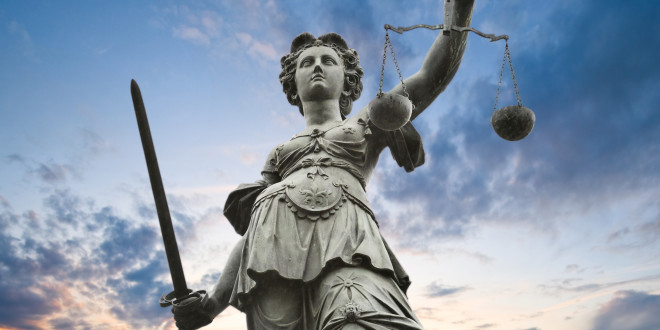
The federal government confiscated more property from citizens (through “civil asset forfeiture”) in 2014 than burglars did, according to FBI figures publicized by the independent Institute for Justice (and that did not count state and local government seizures, which are not uniformly reported).
None of the governments is bound by law to await convictions before exercising seizure rights. (Some of the seized assets must eventually be returned to private-party victims, but news reports abound of suddenly-enriched police departments and other agencies being “gifted” with brand-new cars and other assets acquired from suspects never convicted of crimes.)
The Detriot News (11/13/2015)

Mr. Answer Man Please Tell Us: Why Is “Wednesday” Spelled Like That?
Woden was an Anglo-Saxon god associated with both fury and poetic inspiration. He also had a career in curing horses and carrying off the dead, and Wednesday is his day.
Woden's day has gone through various spellings—wodnesdaeg, Weodnesdei, Wenysday, wonysday, Weddinsday—but even though Shakespeare tried to match pronunciation with his very reasonable “Wensday”, it didn't stick. Woden got to keep his “d” and his day.
Mental Floss
• Wikipedia - Names of the days of the week, Wikipedia - Wednesday Addams, Wikipedia
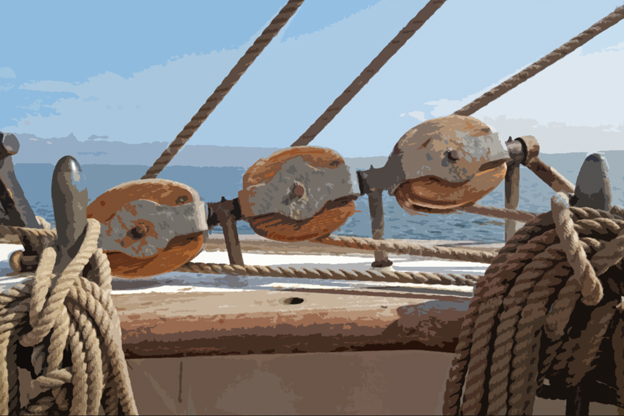
Where Did That Saying Come From?
“Chock-a-block (Chock full):” When pulleys or blocks on sailing ship were pulled so tightly together that they could not be moved any closer together they were said to be chock-a-block.
See the Sea.org

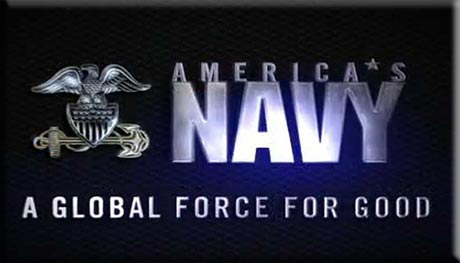
NAVSPEAK aka U.S. Navy Slang
Dancing With The One-Eyed Lady: using any of the two periscopes.
Deck: The floor.
Dink: A sailor who is delinquent in his submarine warfare or watch station certifications.
Dolphins: The name given to the enlisted or officer Submarine Warfare pin.
Dynamited Chicken: Chicken a la king.
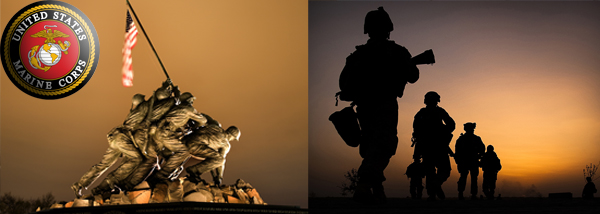
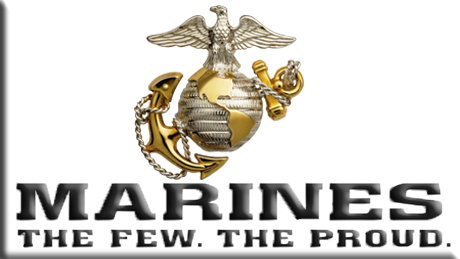
Just for you MARINE
Honker: A redneck female outside of Naval Air Station Memphis where a lot of Marines were taught electronics in the 1960. Honkers would provide sex for a small fee or sometimes just for a beer.
Honorary Marine: Marine Corps Order 5060.19B authorizes the award of the Honorary Marine title to non-Marines who have made significant contributions to the Marine Corps. Two of those so honored were Navy Medical Service Corps Captain Roger Edwards and FBI Special Agent Tom Cottone who received the honor at the same ceremony in 2003. Edwards had made a career out of supporting the Marine Corps as a medical support officer and Cottone was the Special Agent who tracked down and prosecuted people for wearing awards and decorations they had not earned. A year later Cottone was a key witness at Capt. Edwards' court martial in which he was charged with wearing 11 medals he had not earned. Edwards later had the honor of being the only field grade officer in the brig at Quantico, VA and his “Honorary Marine” status had been revoked. Does that make him the world's only ex Honorary Marine.?
Hooch: Hard liquor, usually contraband, often home made.
Hook Up: To get in touch with.
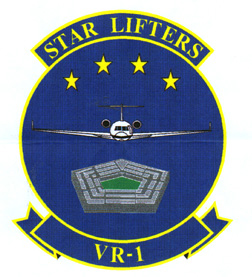
Naval Aviation Squadron Nicknames
VR-1 - Fleet Logistics Support Squadron 1: “Star Lifters”
Joint Base Andrews, Maryland

The Strange, Mysterious or Downright Weird

“Tiny frogs and giant spiders: the best of friends:”The dotted humming frog and the burrowing tarantula have quite the mutually beneficial relationship – something that is even more remarkable because the spider, owing to its size, could very easily kill and consume the tiny frogs.
These frogs feed on the insects that are attracted by the remains of the tarantula’s prey; the frogs also remain protected from predators like snakes due to the presence of the massive spider in the vicinity.
The spider, on the other hand, is benefitted by the presence of the frog, which specializes in eating ants – one of the major predators of the spider’s eggs.
Science Blogs


SONG FACTS
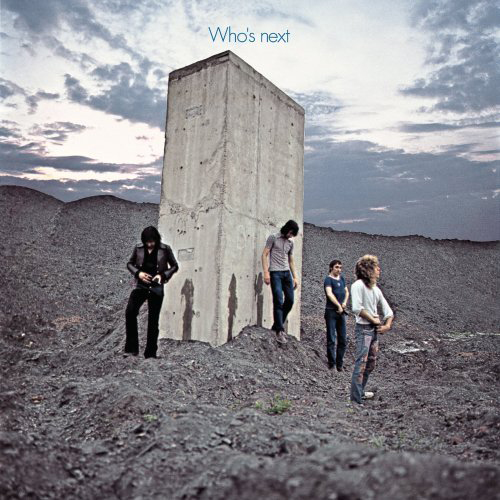
“Behind Blue Eyes” - The Who
Album: Who's Next
Released 1971 
Pete Townshend originally wrote this about a character in his “Lifehouse” project, which was going to be a film similar to The Who's Tommy  and Quadrophenia
and Quadrophenia  . Townshend never finished “Lifehouse”, but the songs ended up on the album “Who's Next”.
. Townshend never finished “Lifehouse”, but the songs ended up on the album “Who's Next”.
Pete Townshend and Roger Daltrey both have blue eyes, but the song is not autobiographical. Townshend has said that he wrote it to show “How lonely it is to be powerful”.
Townshend was going to use this as the main song in the Lifehouse film for the villain, Jumbo.
Pete Townshend has explained that he never behaved like a typical rock star when he was on tour, especially when it came to groupies, which he tried to avoid. He says it was a run-in with a groupie that was the impetus for this song. Townshend, who got married in 1968, was tempted by a groupie after The Who's June 9, 1970 concert in Denver. He says that he went back to his room alone and wrote a prayer beginning, “If my fist clenches, crack it open...” The prayer was more or less asking for help in resisting this temptation. The other words could be describing Townshend's self-pity and how hard it is to resist.
The original demo version is a lot quieter and stripped-down. Townshend released this version on his 1983 album Scoop.
Roger Daltrey did a new version of this song with the Irish group The Chieftains, which was released on the group's 1992 album An Irish Evening. This rendition, which was recorded live at the Grand Opera House in Belfast, features traditional Irish instruments, including fiddle and bodhrán.
The lyrics are based on Townshend's own feeling of angst - that no one knows what it's like to be him, with high expectations and pressure to be someone he's not. Knowing what a miserable sod he can be, he's telling us not to let himself enjoy it because he doesn't want to enjoy making us (the fans) happy. It'll mean we will ask for more!
This is one of the most popular live songs from The Who, played at the majority of their concerts. Pete Townshend has said at various stages of his career that while he believes it's a great song, he doesn't get any satisfaction performing it, as he feels it is out of context of his Lifehouse project.
The Who official site / Rolling Stone (album review) - Rolling Stone magazine / Rock & Roll Hall of Fame / Billboard / All Music / Song Facts / Wikipedia
Image: “Who's Next (album)” by The Who
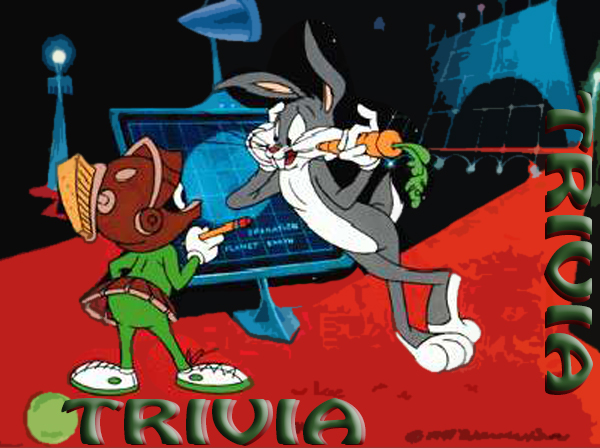
Trivia
● The United States' first satellite, the Explorer I, weighed only 31 lbs.
● The United States Merchant Marine Academy is the only U.S. military academy to lose students in a time of war. 142 students died during WWII.
● The University of Minnesota is older than the state of Minnesota.

A Test for People Who Know Everything
William S. Gray, A. Sterl Artley, and May Hill Arbuthnot were once three of the most widely read authors in the United States during the 1940’s, 1950’s and 1960’s. What books did they author?
● Answer for People Who Do Not Know Everything, or Want to Verify Their Answer History Literacy.org
Answer to Last Week's Test
The Flintstones TV program was the first animated, prime-time television sitcom intended for adults. For the first two years of its run, who was the sponsor of the program?
Answer: The Flintstones was sponsored by a cigarette company during the show's first two seasons. The show was intended for adults, not kids, so few complained about the commercials that depicted the stone-age characters puffing away on Winston’s. The Telegraph UK

Joke of the Day
Understanding Engineers
Normal people believe that if it ain't broke, don't fix it. Engineers believe that if it ain't broke, it doesn't have enough features yet.
Pun of the Day
A jump-start cable walks into a bar. The bartender says, “I'll serve you, but don't start anything.”
























